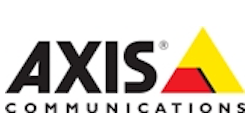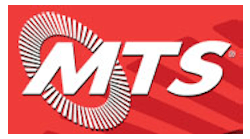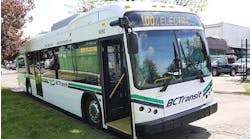In keeping rail lines secure, utilization of technology as well as staffing security can drastically decrease the amount of accidents — and make determining the fault in an event more effective.
"Historically video surveillance was not that common in the right-of-way area of a rail system. There are a number of contributing factors as to why. It ranges from the infrastructure, there is a certain amount of surveillance that you need for connectivity to the camera. We’re talking about that area had always been a challenge. Also lighting conditions, image quality and radio surveillance cameras ten years back were not what they are today. Image quality and preforming in low-light and back-light conditions, but also just environmental impact — meaning extreme conditions, very hot or very cold — the technology just wasn’t fitting at the time," Anthony Incorvati, business development manager of critical infrastructure & transportation for Axis Communications explained. "If you fast-forward to today, I always like to say that the world is changing fast, and one thing that I like to say about IT cameras is that they are really a computer with a lens. The processing power in these cameras is increasing just like everything else in this world, and that processing power is enabling a lot of interesting things."
Incorvati said that one of the areas is that cameras are able to preform better in conditions such as poor-lighting, low-lighting or blinding-light. Incorvati added that it is that it is allowing for more intelligence to be pushed to the camera.
"What I mean by that is if you think of that, if you use a smart phone as an example that is really a computer, people use it as a phone, but it is really a computer and there are a lot of applications that reside on that computer, that smart phone device. And what is happening in the world today, just like IOS and Android, especially with Axis, we’ve created this open platform we call Axis Camera Application Platform ACAP — what this allows is for third-party developers to create applications that would reside on that camera," said Incorvati. "It is more on the lines of analytics, some of the benefits is more intelligence to the edge and on the camera. It allows for more of the processing of the information at the camera level and getting away from server intensive level. You’re really processing on the camera and sending back the important information to the information control center or whatever important information control station in the area."
Incorvati said that through use of the camera intelligence, agencies can cut infrastructure costs. This method offers a reduction in bandwidth.
"There is another thing that is happening and it falls in line with what is happening at the camera level and it is that there is a technology called Zip Stream, what is does is it’s artificial intelligence that sits at the camera level and what it does is help drive down the bit rate, which that helps with the infrastructure cost as well," explained Incorvati. "Driving down the bit rate, you don’t have to worry about bandwidth intensive infrastructure and what I mean by that is that if there is no activity, there is probably nothing happening there for a long amount of time, and if there is nothing happening there the camera automatically drives down the bit rate, which really supports the bandwidth. When something does happen it’ll show that image in a high resolution."
Securement through multiple methods
Paul Jablonski, CEO, Metropolitan Transit System, said that the agency uses a number of different methods when keeping its rail lines secure. Jablonski explained that a top priority for MTS is a combination of safety and security.
"On the security side we’ve been pretty committed to security from the stand-point from making our passengers feel secure while they are riding the system and keeping our employees secure while they’re doing their jobs," said Jablonski. "We’ve got a combination of security, both contracted and in house. Right now we have thirty-six in-house code enforcement officers. These are people in uniforms, they don’t have full police powers, and they’re more like a peace officer. They can’t write ordinances and they have the power to detain for arrest. We supplement that with one hundred seventy-five private security guards. Their primary job is to secure the system. They stand post at stations, we want them to be highly visible to our passengers."
MTS also plans to introduce new security officers of their own. The agency also partners with the area's police departments to have a security team that is able to utilize all of the authority of a police officer. While personnel is an essential aspect of keeping MTS rail lines and cars secure, the agency also incorporates technology.
"All of our trains are equipped with cameras — both inside and out and almost all of our stations are equipped with cameras. We have a control center and there is a security center with a big bank of TV monitors. So we can watch anywhere in the system at any time. Soon we’re going to have the capability, when we get this Wi-Fi network up, to look at the train in real-time," explained Jablonski. "We don’t have that ability yet, it’s mostly recorded. We do have real-time at the station, if something is going on at the station, and this happens a lot, we watch people and we have some sophisticated software that tracks people and tracks packages left."
Tracking what is left at rail stations and suspicions activities allows for MTS to deploy the appropriate security to tackle the situation. Like many agencies with rail lines, MTS faces issues with people ending up on rail tracks — either purposefully or by accident.
"There’s two things that happen, one is people are driving and they have their GPS systems and they make a turn onto the tracks — maybe alcohol had something to do with that. We just had someone drive their car onto the tracks and it got stuck and hung up, we had to stop the train while it got towed off," said Jablonski. "We do have trespassers on our tracks, we are very vigilant about that, but one of the unfortunate things is sometimes with drugs or alcohol they fall asleep on the tracks. Most of the suicides on the system are like that. There’s not much you can do, but we try in our right-of-way to clear brush where people could jump out in front. We don’t have intrusion technology, we do have it our tunnel at San Diego State University. Anyone who walks into that tunnel guards are notified immediately, so we have intrusion detection there, we have full time security at the tunnel so that we can respond to that very quickly."
Jablonski explained that one of the most important aspects of rail securement is training MTS operators to be vigilant. The MTS trolley experiences rare pedestrian accidents. Jablonski explained that there are outside distractions that interfere with their safety.
"One of the things that contributes to that are people walking around with headphones and listening to music and not being observant. We’ve had cases where the gates have been down, lights flashing and there was woman who was looking at her phone and had headphones on and walked right into the train. Those things are very infrequent, but they happen. We have a lot of safety features built into all of our crossings," said Jablonski.
MTS utilizes yellow paint on rail crossings such as in Old Town due to previous accidents.
"We’re always adding cameras to more stations. We’re always upgrading our cameras too," explained Jablonski. "Part of the problem is if you have a camera at a station and you have someone that you need to zoom in on and you can’t see their face. So we have cameras where you can zoom in and still see them, we have these on the trains and the buses and we’re very effective at catching people."
Developing technologies
Incorvati said that technology has continued to change in the past few years.
"Thermal cameras for example, the price points have really gone down, and thermal cameras are really the ultimate in terms of detection. They can detect at any weather condition and there are analytic technologies that sit on the camera and can detect an object moving at a very significant distance with low pixel count. That helps in the whole right-of-way deployment because now you need less cameras and you’re able to detect in much longer ranges," said Incorvati.
The embedded software in newer technology can also analyze video to determine when and where there is motion, and where there isn't.
Incorvati explained, "What it does is it creates at the camera level and all this embedded intelligence at the camera level. All this intelligence determines that ‘okay, there is motion here and I am going to create this dynamic region of interest’ and in this dynamic region where there is activity happening and motion happening, the video is going to be compressed less — that will help preserve important information, forensic type information and it will give good image quality to those dynamic regions of interest. In areas where there is nothing happening it will compress that video a lot more. That is all done at that zip stream."
Incorvati said that the the software at the camera level is a platform for continued growth. As technology continues to develop, there will be more opportunities to increase rail safety and right-of-way securement. Along with direct camera surveillance there are a number of different technologies that come into play. While Axis does not develop, there are companies that develop integrators in railroad to provide solutions for remote power — including solar. "Things like that are enabling more and more surveillance for the right-of-way. It’s not just about the camera. If you look at ten years ago to today, things are changing rapidly," added Incorvati.
Incorvati said that securing right-of-way on rail lines is a way for an agency to protect itself.
"There are multiple reasons why agencies would want to cover the right-of-way. Sometimes I think that they are reluctant to say why. There are challenges from the liability side, there are incidents where they need to prove how it happened," said Incorvati. "I see an increase in technology there, especially level crossings and grate crossings."




